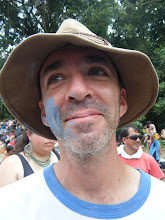Well, it looks like that I'm moving up in the world. As some of you know (and probably more don't know considering there are 6 billion people in the world), I have been volunteering with Habitat for Humanity Guatemala for about three months now as a Profiles volunteer. I will soon be promoted to the Profiles coordinator. The new job will mostly be office-bound, so I figured I should get some of my recent photos out there before they become obsolete.
Habitat's main goal is to provide people with adequate housing. They offer no interest loans and support throughout the whole building process. Since 1979 they have been involved in building over 35,000 homes in Guatemala. Check Habitat for Humanity Guatemala's website here for more info:
http://www.habitatguate.org
Being a well-known organization, Habitat gets many volunteer groups from mostly North America and Europe who generously donate their time and money to come down to Guatemala and help out with all types of labor on a Habitat building site. The groups are usually only here for a week and, therefore, never have the opportunity to see the completed house. This is where the Profiles volunteer comes in.
A family in front of the one-room shack where they used to live and their new house:
After the groups are long gone, the Profiles volunteers are sent out to interview the families and to take photos of the finished home. In theory, the homes are supposed to be completed and the family happily living in them, but I would say only about 70% are done by the time I arrive. I visited one rural home where they told me that they would be able to move in when the government arrived to hook up the electricity. In this area it can take up to eight months for them to come out there -- think about that the next time the cable guy tells you it will take a couple days! The info and photos are then sent off to the groups so they can see the finished product and stay connected with Habitat. We also visit families whose houses are part of the dedication program and families who have received emergency housing assistance after natural disasters.
Houses donated to people who lost their homes during Hurricane Agatha:
Now these Habitat homes are literally anywhere and everywhere around the country (B.F.G?) which makes the Profiles volunteer job, at times, physically grueling, a real endurance test. The Profiles volunteer is accompanied by a Guatemalan promoter from the local office who drives us around on a motorbike to meet the families. Habitat, unfortunately, does not have the funding for pick-ups and SUV's, so motorbikes it is.
Some homes way out in the countryside:
An extreme example: I left my house at 6 AM to take a chicken bus (chicken bus = Guatemalan inter-city transportation = old, American school buses jammed pack with people driven at breakneck speeds) for three hours to the city, El Quiche. Then from 9:30 AM to 6 PM minus an hour for lunch I was on the back of the motorbike to visit just four families. For the last family that day we had to walk up a huge dirt hill for twenty minutes because the bike couldn't make it. The next morning I woke up early to visit a family who wasn't there when we went the day before. Then that afternoon it was another two and a half hours on the back of a motorbike to get to Nebaj to visit three more families. We leave at 6 AM the next morning-2 1/2 hrs back to El Quiche- and after lunch I meet two more families and then chicken bus for three hours back to Xela, my hometown. A serious butt-kicking Profiles mission.
So here are a few of the photos that I've taken over the past few months. It is definitely not ground-breaking photography - basically just interior and exterior photos of the home and some portraits. The houses are always simple cement block homes. The families are always friendly though sometimes deathly shy, but almost always do their best to accommodate me and my invasion of privacy. I have found that taking photos of the kids first is the best way to break the ice. They definitely don't share their parents inhibitions.
They'll probably never see this, but I would like to say thanks to all of these families (and those not shown) for letting us take photos which in a way helps to keep the program going.






















































